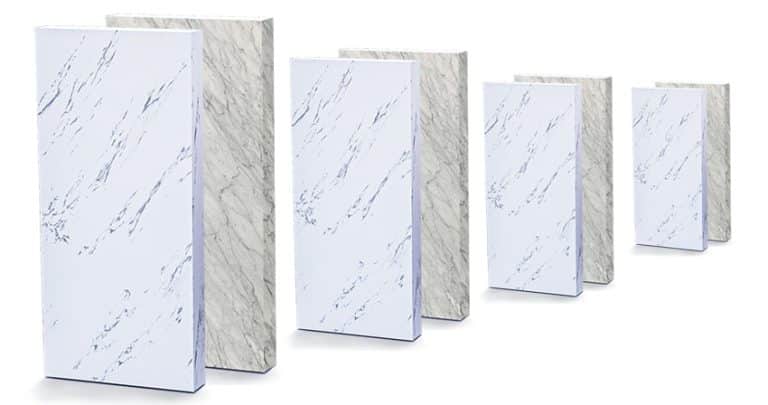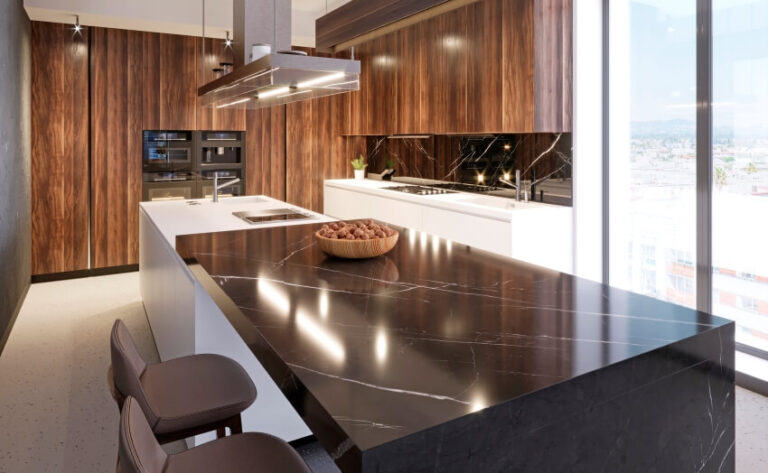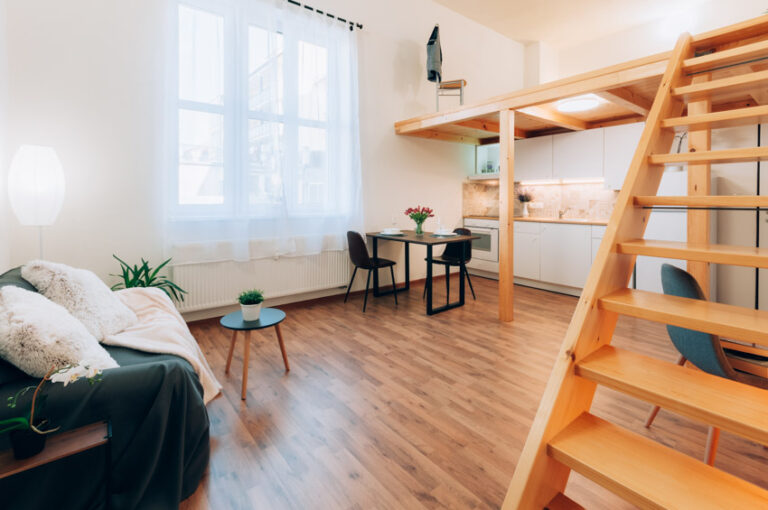What Is Mindi Wood? (Furniture Uses & Durability)
Mindi wood, also known as Chinaberry or white cedar, is a wood that naturally resists rot and fungus. The primary producers of this straight-grained material are tropical Asia, Holland, India, Indonesia, Sri Lanka, and Papua New Guinea.
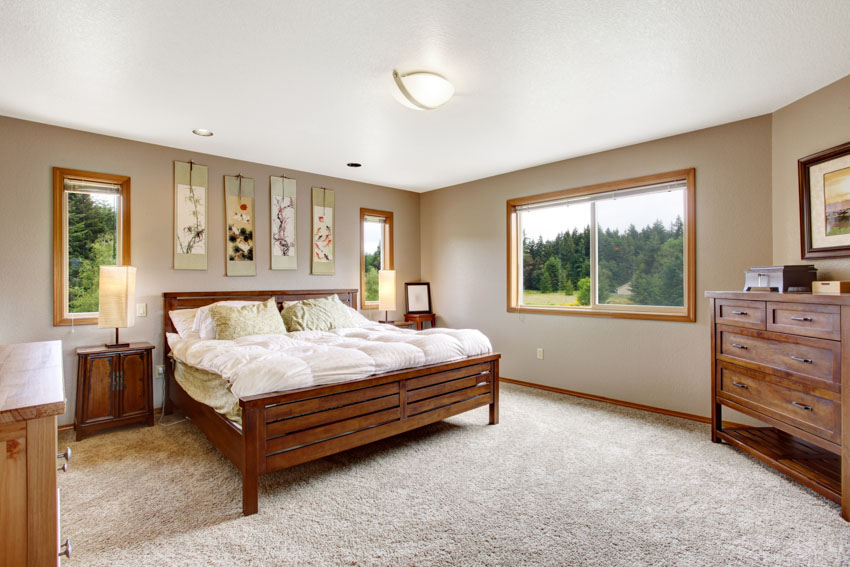
Artists, cabinetmakers, and woodworkers prefer this naturally coarse wood because it is so easy to work with. It sands simply, tolerates friction, saws easily, and dries quickly with less shrinking and warping than similar materials.
Is Mindi Wood A Hardwood?
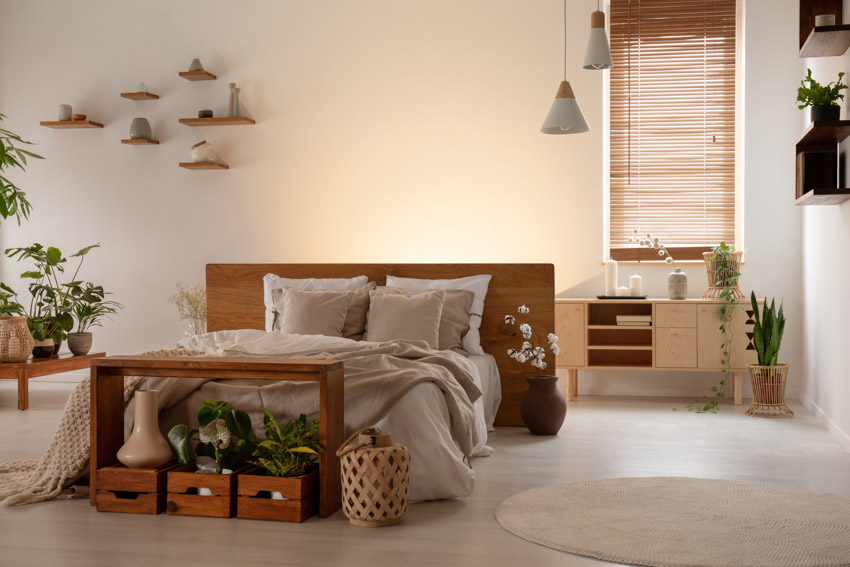
There are many names for this material – a pricey option often utilized in projects that need solid wood to guarantee endurance. Although not as robust as teak or mahogany, the wood from the mindi tree is also considered a hardwood.
When determining what it is, one must remember this material has a rapid growth rate and a relatively large diameter. Anyone who enjoys building, whether DIY enthusiasts or experienced house builders, should be aware of the properties of this material.
It is one of the uncommon types with a straight grain and few to no knots. It is famous for doors and window trim because of its appealing look. The tight wood grain also makes it an ideal option for veneers as it may adhere to bases better and increase the lifetime and durability of items.
It has a poplar-like look and a light yellow color with brown streaks. The middle of the material will start to get darker when exposed to light. Aged types begins to resemble the same shades as teak or cherry wood. Although the density and coarseness are comparable to oak, its texture has a tight grain pattern.
Hardness
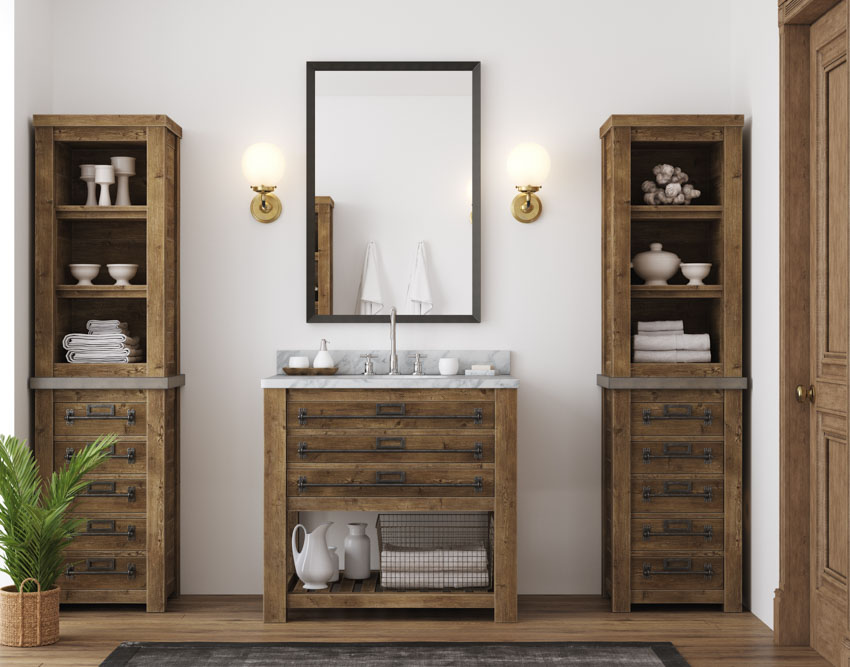
We frequently hear the words “hardwood” and “softwood” in the wood industry. Hardwood trees are common in furniture construction. This type features a richer grain, is slower to grow, and makes for more robust, heavier furniture. The Janka Hardness Scale, which spans from soft to hard, can be used to measure the hardness of the material.
Red Oak and mindi are similar in density. Mindi ranks at 1,055 on the Janka scale (which measures the mass and hardness), whereas red oak comes in at 1,060. The two have a barely discernible difference in hardness. Like cedar, this type has a built-in resistance to rot and fungi.
Fresh-cut or mindi sapwood is yellow with brown streaks and resembles poplar. The material darkens as it gets closer to the heartwood and when exposed to more light, just like teak or cherry. It has a coarse feel similar to oak; however, oak’s grain patterns are looser.
The most common material used to make different types of shutters, interior doors, chests, window frames, boxes, furniture, and other items is this material. Due to their resistance to shrinkage, veneers adhere to this type quite effectively.
It is simple to work with, and carvers utilize it to make little novelty and specialized objects. It is also one of the better species for making turnings, frequently employed in the design of distinctive furniture pieces.
Although mahogany and teak are the traditional building materials in the construction of different types of furniture, many manufacturers have discovered that this type is a good substitute for usage in the significant furniture business.
Durability

The mindi tree adapts well to most environmental factors and is disease- and insect-resistant. Although it is known to develop dense thickets in forests and marshes, its invasive characteristics have not led to its inclusion on the list of invasive species.
Growth care is necessary to stop the trees from displacing native species. In some regions of central Java, this material grows quickly and effortlessly.
On the other hand, almost no mindi is currently on the market with an FSC certification. However, it provides high-quality material with minimal waste; in particular, the finished appearance is significantly less “flamey” than teak or mahogany.
This material is grown on the fringe and used to distinguish one plot from another. They offer a towering, quickly growing screen that farmers can harvest once they are mature, which takes between 15 and 20 years.
They are not accepted as a part of a clearing but rather one at a time when they are ready. Very little waste comes from this type because branches or other small parts are all sold.
There is a regular replacement for Mindi trees whenever saplings are available to fill the spaces left by the trees cut down, and the saplings spring up everywhere because birds eat and disperse the seeds anyhow. In light of this, it is being produced and harvested sustainably, with little environmental harm.
Is The Wood Expensive?
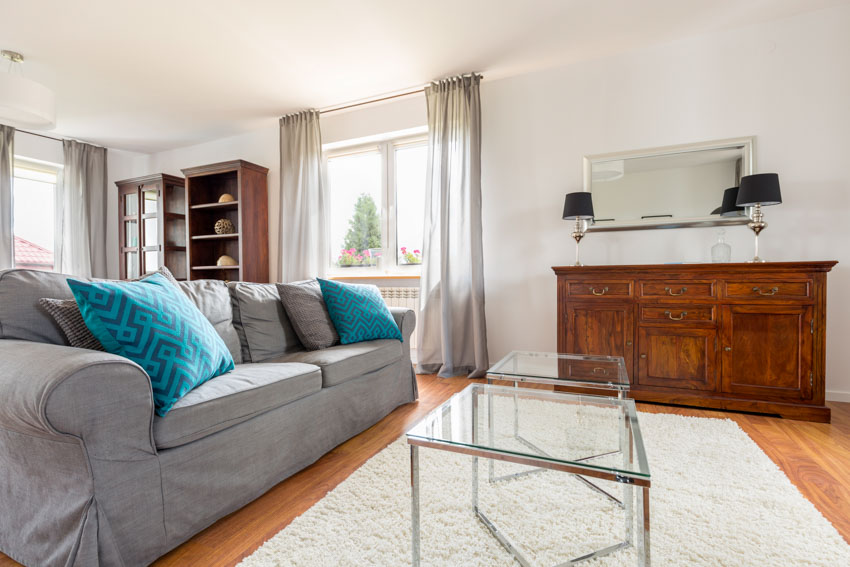
The market has a pricey variety of options in the form of this material because of its greatest strength and durability. It is renowned for its incredible toughness, endurance, and resistance to deterioration. That is why builders and carpenters consistently select it.
Teak and mahogany are the primary raw materials in the furniture industry; practically all small and big-scale furniture makers use this type as their primary raw material.
Aside from teak and mahogany, one of the substitute raw materials for producing furniture is mindi. Compared to other types in the same category, this material has a somewhat high price. However, the size and condition affect the price. However, the price is equal to its benefits because:
• It has a great appearance
• It naturally resists fungi and decay
• It has knot-free texture
• It darkens over time
• It has a close grain texture
• It is adaptable to different environmental factors
Wood Furniture
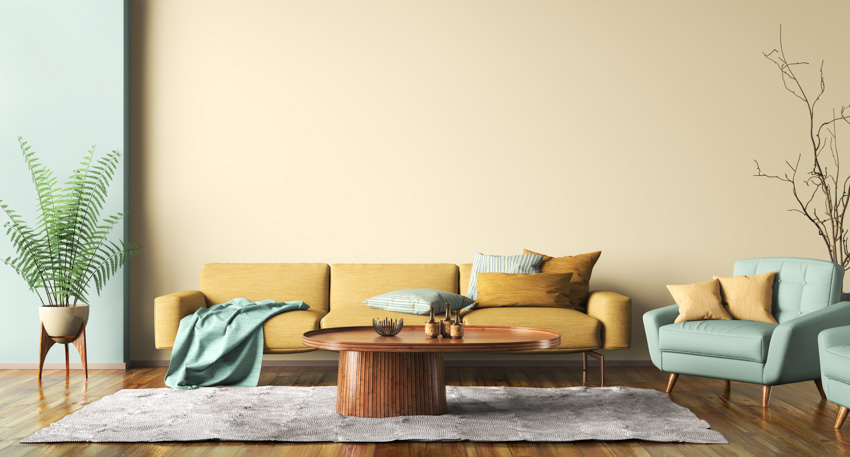
The primary use of this material is in the manufacture of furniture. These trees generate exceptional quality lumber with lovely veins that lend themselves to processing and building with excellent results.
The furniture items made of mindi are durable and solid because it is a dense type. Stain and varnish bring out the grain, which is ideal for veneering. Additionally, you can use it for paneling, light construction, and flooring.
In Indonesia’s furniture business, it first gained notoriety due to its expansion into exporting its goods to Europe and the United States, where oak was popular. Both the pricing and the availability of the oak wood were somewhat tricky. For this reason, the local wood industry searched for indigenous lumber to utilize as an alternative to oak.
The discovery of this material was an excellent option to provide acceptable outcomes. It has been demonstrated in later studies that it has several benefits as a base for furniture.
Along with the teak or mahogany widely utilized earlier, several mindi planks of lumber were used as raw materials for the furniture industries starting at that time.
From then on, mindi wood veneer were created and made accessible to produce flat and broad boards. In addition to its lovely beauty and grain, this type is resistant to fungi and acts as a natural termite deterrent. With slight shrinkage or warping during the seasoning or kiln drying process, these planks maintain their shape well.
Carvers often use this material to create specialized things or little trinkets, which work well for turning in distinctive furniture designs. Some commercial dealers have imported larger quantities of of this material to use for flooring.
Carvers mainly utilize this material for niche products and small-scale turnings. It is also suitable for interior doors and, to a lesser extent, moldings, cabinets, and mini furniture, such as chests and boxes.
Though teak or mahogany are often the raw materials used to make furniture, mindi is also a solid and attractive alternative. The close-grain texture is well suited for producing veneers in specialized applications. Mindi trees are a sustainable crop with advantages beyond merely making wood goods.
Wood Furniture Quality

Aside from oak and teak, the most common and quality material used to make different types of furniture styles and other items is mindi wood. Mindi’s coarse grain sands smoothly and readily accepts stains and finishes.
The furniture quality is unlikely to distort or twist since it is dimensionally stable, just like cedar. When cutting, milling, sanding, and gluing, mindi efficiently responds to woodworking tools.
When working with this material, you should pre-drill pilot holes for screws. Avoid drilling within 3/4 inches of any edge or end. Even though the grain is straight, it has extensive open pores that you must typically fill with substances to provide a smooth, glossy finish. Without primer, mindi can also highlight its rough or rustic appearance if that is what you desire.
It is crucial to take the appropriate safety measures when working with this material. Cutting or sanding this type of lumber can produce dust irritating the skin, eyes, nose, and throat. Wearing eye and respiratory protection when working with this wood type is strongly advised. Carpenters and woodworkers prize this material because it has qualities that make it simple to utilize.
Because of the cedar-like stability that prevents warping and twisting, manufacturers can make furniture quickly and efficiently with this type.
You can use it with certain tools without getting damaged. It cuts and mills very well using standard modern machinery, with a smooth finish you can achieve with less effort.
Mindi Vs Oak Wood
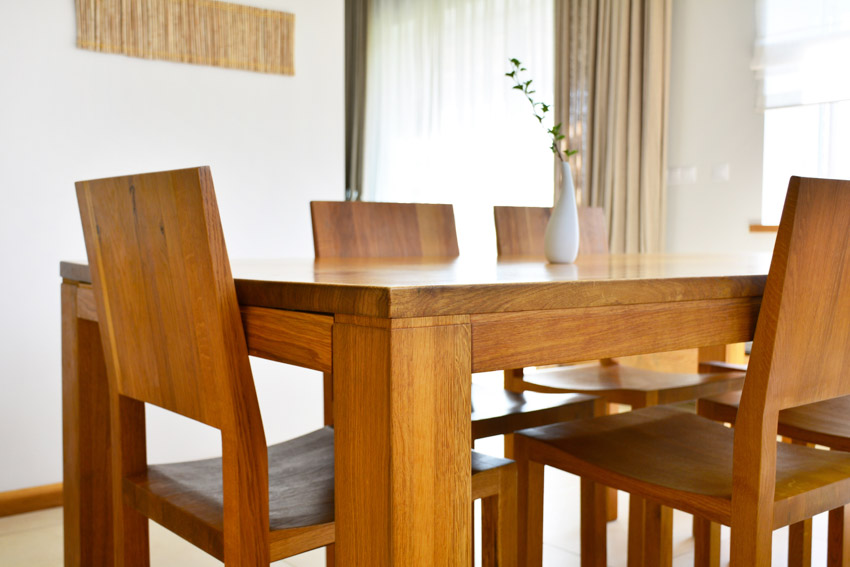
Although the feel resembles oak, this material has a closely packed grain. Woodworkers like to work with it because it is simple, especially for smaller jobs. The mindi tree’s heartwood is darker than the sapwood, comparable to poplar in color.
When exposed to natural light, the material darkens and looks like cherry or teak. On the other hand, oak is a timeless material that comes in two colors, white and red, and has a cozy appearance that works well for furniture like tables and chairs.
Although sturdy, oak responds nicely to treatments like distressing and lends a rustic feel to homes. The two varieties of oaks have a recognizable grain pattern that is easy to identify, and they both range in tone from a natural grayish brown to a redder tinge.
This material is a recent preference for fine veneers and other uses because of its tight grain and almost knot-free textures. Due to its density, which is relatively comparable to red oak, it makes an excellent option for users on even floors. Although, it has a characteristic brown tone that ages to a more mellow state and goes nicely with teak.
Mindi Vs Teak Wood
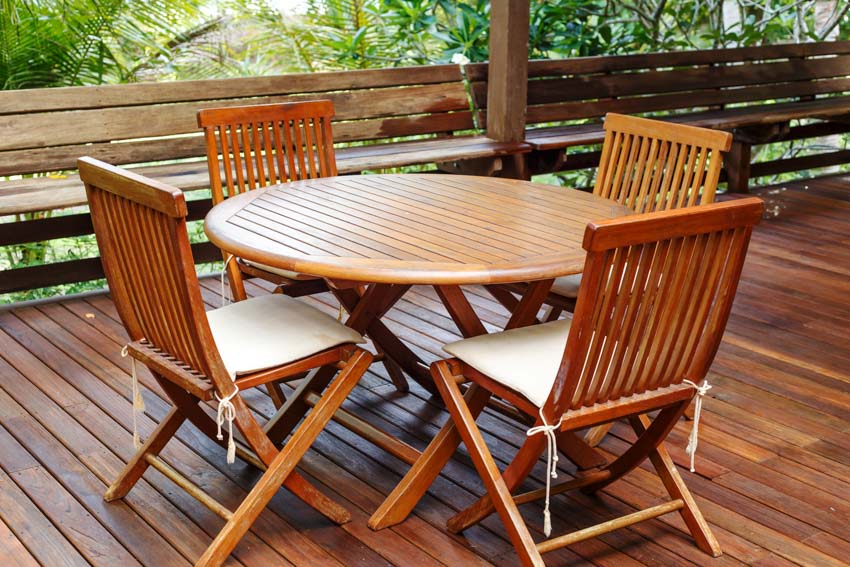
Due to its adaptability and toughness, teak is famous as the “king of wood.” It is exceptionally water-resistant and fungus and decay-resistant due to its naturally high oil content. It is resistant to flames and can even tolerate extreme heat.
Golden brown heartwood and yellow or gray sapwood make the finished timber look beautiful. Due to these characteristics, many manufacturers use these types of teak wood for various purposes, including ship decking, indoor and outdoor furniture, veneers, turning, carving, and high-end joinery.
On the other hand, brownish-gray in color, finely grained, sturdy, more expensive than other types, and resistant to fungus, white ants, and insects are the key characteristics that make mindi also popular. Due to its smoothness, this material is simple to polish and preserve; the easiest method is to wipe the furniture with a cloth, sufficient to keep its shine for a long time.
Many say the best option for making furniture is teak because it has a smooth surface, provides the desired finish, and gives a highly opulent appearance. However, mindi can also compete because it requires minimal upkeep and is considered a sturdy, long-lasting material.
Depending on how you intend to use the item, regular painting and polishing are necessary for mindi and teak. Overall, mindi is a robust, water-resistant type. It offers a lovely aesthetic while being quite effective. Polishing it can create an excellent surface that is termite resistant.
High-quality material is crucial for adding style and elegance to your home. A variety of wood products we use daily are from mindi. It provides a sturdy foundation for a variety of furniture and household items. Use this material if you want furniture with an excellent fiber appearance for less money than teak and with natural wood fiber.
See more related content in our article about tigerwood flooring on this page.


